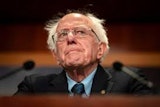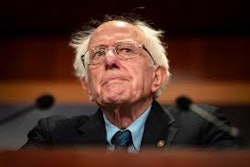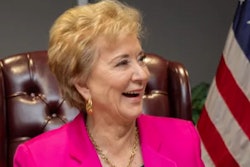 The rhetoric of presidential candidate Donald Trump, the front-runner for the Republican nomination, has proven to be polarizing.
The rhetoric of presidential candidate Donald Trump, the front-runner for the Republican nomination, has proven to be polarizing.While Brussels was picking up the pieces and the world was left once again contemplating how to deal with terror, I can understand why some of you may not have had your Spring Break interrupted by the concerns of about 50 Emory University student protestors.
The students felt terrorized by a number of chalk graffiti markings that indicate a preference for the presidential candidacy of Donald Trump.
You know, he’s the guy who wants to build a wall, ban Muslims, and use waterboarding on terrorists.
Students, many of them, people of color, feel uncomfortable with his message.
Of, course, after Brussels, it was Sen. Ted Cruz who advocated vigilante-style patrols of known Muslim neighborhoods.
They should fear Cruz, too.
But I’m not here to criticize the students for being crybabies, as some media accounts have. The coverage I’ve seen has been to make fun of the students, as if to say, “Grow up, it’s just chalk.”
But it’s not.
If Trump becomes president, it’s really about their future and ours.
So my intention is not to make fun of the protesting Emory students, but to applaud them.
People get hung up in the free speech aspect of the story.
But no one’s shutting down the chalker.
He/she had his/her say and likely will face some kind of minor vandalism charge if they’re ever caught.
The students did the only thing they could do—complain to the administration about how Trump and his policies make them feel. And how the expression of a number of scrawled chalk marks is just short of the way you’d see forms of hate speech communicated.
I say just short because “Trump 2016” is not a swastika.
But then the manner in which the marks were left—anonymous, with the intent to intimidate—is akin to the way racist bullies communicate. Indeed, it’s these people that Trump has empowered on his campaign.
And yet while Trump speaks and enables hooliganism and a lack of political grace, whoever left the marks wasn’t interested in free speech or open rational discussion.
Their expression was to hit and run and intimidate the Emory student body.
The students who went to see President James W. Wagner were interested in real free speech and dialogue.
They let the University know that Trump’s policies conflicted with their sense of diversity. And how it conflicts with the university’s stance.
To me, the students won that round.
Unfortunately, Wagner didn’t know how to take advantage of the opportunity to show real solidarity with the students.
The email the university sent was not exactly heartfelt:
“By nature of the fact that for a significant portion of our student population, the messages represent particularly bigoted opinions, policies, and rhetoric directed at populations represented at Emory University, we would like to express our concern regarding the values espoused by the messages displayed, and our sympathy for the pain experienced by members of our community.”
It sounded bureaucratic and lawyered and was as phony as anything a politician may have said.
That’s why I don’t make fun of the students.
They’re just keeping it real. Emory is their home, and they are expressing their free speech, not stifling an anonymous chalker.
In the end, more speech is better than less.
It’s a shame the anonymous chalker is too cowardly to come forward and defend his position.
Emil Guillermo is an award-winning journalist and commentator who writes for NBC News Asian America and http://www.aaldef.org/blog


















